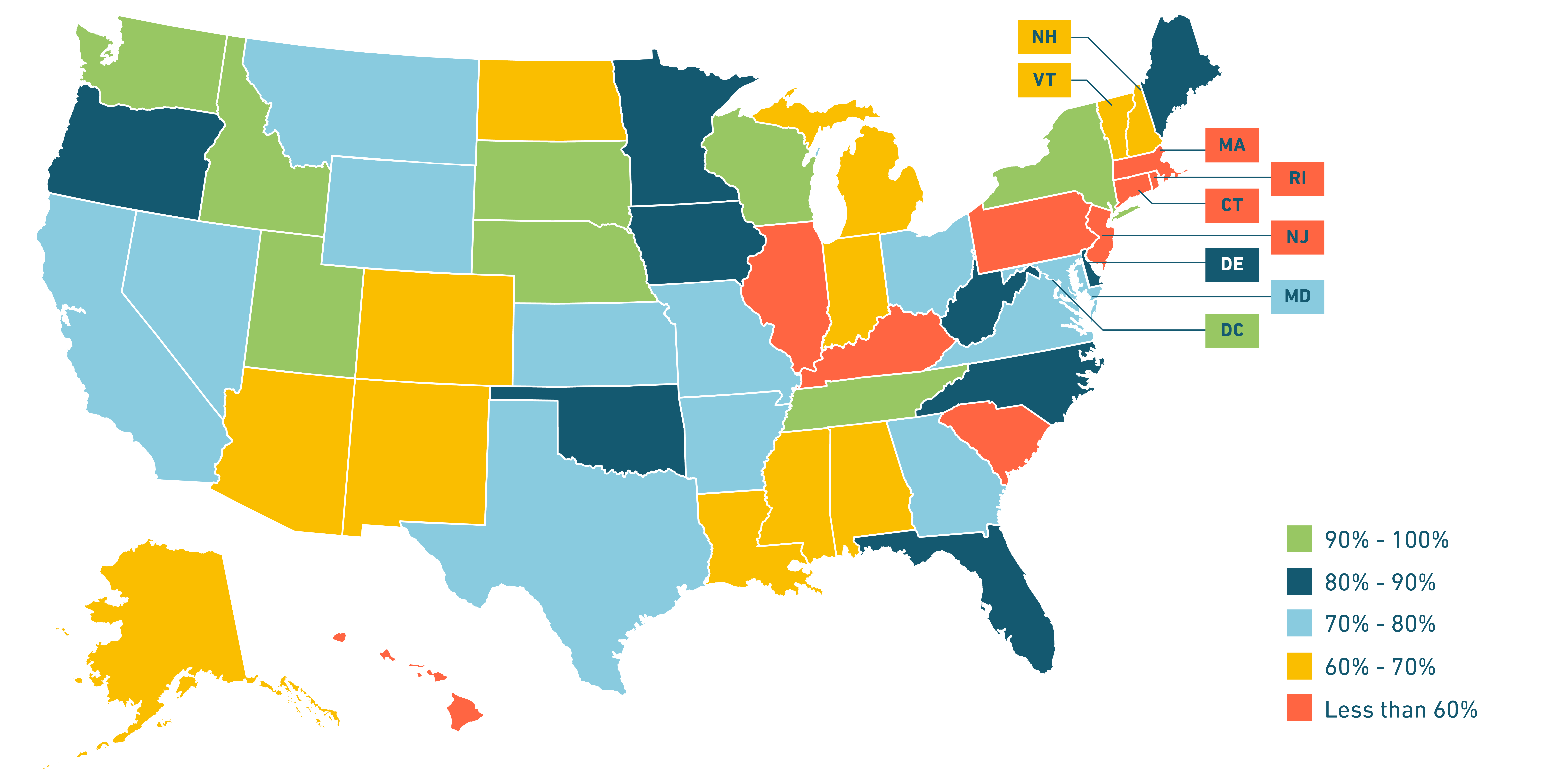The Funded Ratio of Public Pension Plans in America (2019)

- Your state’s funded ratio should aim to be 100% funded. Anything less can create long-term costs and threaten retirement security. Being just 80% funded is not okay.
- Read more about your state’s funded status — and how trends in the age of Covid will influence your state — in Equable’s “State of Pensions 2020” report.
- The growing cost of unfunded pension promises is having direct and immediate influence on the ability of school districts to serve children. Find out more how in our report on the “Hidden Education Funding Cuts” created by growing pension debt costs.
Some states update their data faster than others. Want to know the most current information about teacher pensions where you live? Feel free to reach out with any questions to Equable’s team here.
The growing cost of unfunded teacher pension promises is hurting kids. Over the past 20-years, the funded status of most teacher pension plans in America has eroded. However, promised benefits still need to be paid. To backfill the shortfall in funding for those benefits, states, school districts, and employees have all been paying more. Here are some resources to better understand how this “crowd out” effect is really a hidden budget cut for education.
- Pivot Learning in California has documented some of the specific ways that schools are cutting back to pay for growing pension costs: deferred maintenance, expanded class sizes, and fewer enrichment programs are just a few of the ways education equity is being damaged. Carrie Hahnel has followed up on this work detailing some of the ways that spending on teacher pensions exacerbated school district inequities.
- Maryland has taken steps in recent years to try and fix the funding for its state and teacher pension system, but the status quo is just exacerbating education equity problems. Bellwether Education Partners documents how with a comparison of the city and county of Baltimore.
- It’s important to understand the basics of how pensions work. They are different than Social Security, and the problems are typically not overly generous benefits, or the lack of new teachers chipping into the fund. Learn pension basics here with this short series.

